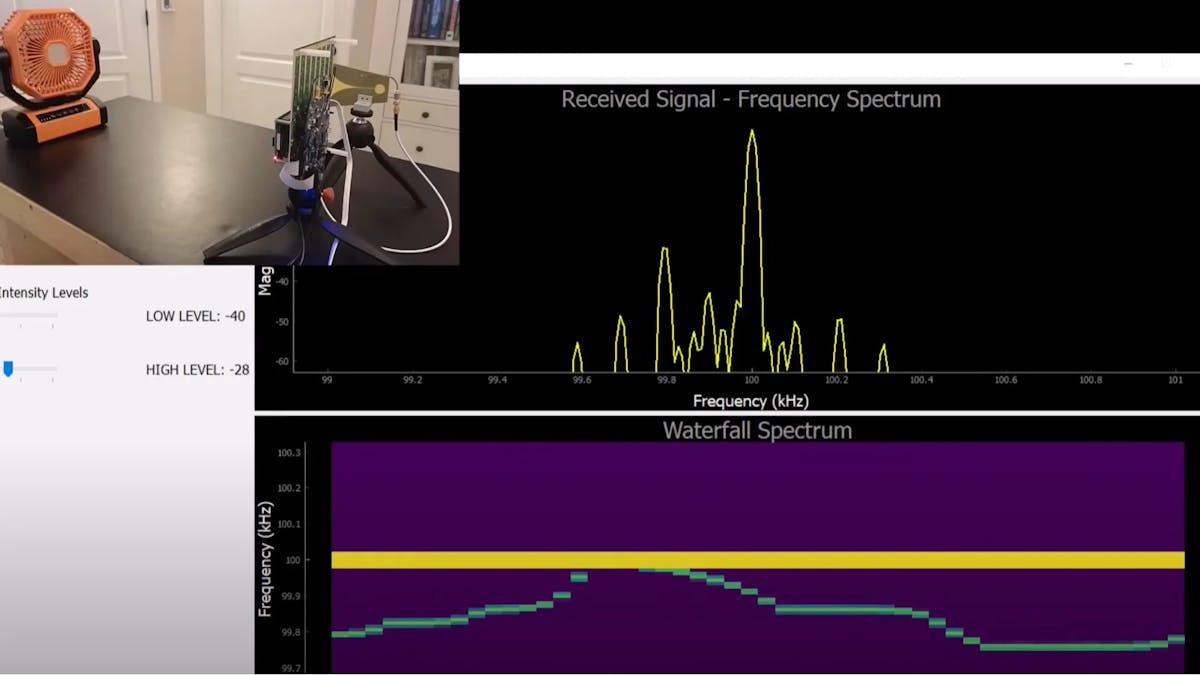Implementing a Drone Tracking Radar System
Series of YouTube videos covers radar fundamentals to a complete drone tracking system

Software-defined radio (SDR) is allowing individuals to learn about the many different areas in the exciting subject of RF/wireless engineering. One of those subjects that SDR makes readily available is radar systems. Indeed, with the low-cost SDR systems on the market today, users can begin implementing and experimenting with radar techniques of varying complexity. This is best demonstrated through a series of YouTube videos currently being put together by Jon Kraft of Analog Devices.
The first two videos from the five-part series will lead up to the theory, design, and implementation of a complete DIY radar system that can track drones. The videos start with an overview of the hardware that will be used in the examples shown. For the demonstration the Pluto SDR platform from Analog Devices is used. This is a popular SDR that costs between $200 to $300 and has been around long enough such that many examples and tutorials can readily be found online. The device is based off of the AD9363 chipset which can transmit and receive (full duplex) RF signals from 325MHz to 3800MHz. In addition it can operate with a 20MHz bandwidth with a sample rate up to 61.44MSPS. Although the device alone can be used to implement a simple radar system, Kraft opts include an additional phased array platform into the project for additional capabilities.
The phased array platform that is used is the CN0566 phaser development platform. Similar to the Pluto SDR, the phaser platform was designed with learning and experimenting in mind. It features eight on-board patch antennas that operate from 10GHz to 10.5GHz and feed into low noise amplifiers, followed by a pair of ADAR1000 integrated circuits. The ADAR1000 chips are four-channel beamformers that enables 360-degree phase adjustment of incoming signals in 2.8 degree resolution and 31dB gain adjustment in 0.5dB resolution. The platform also features external mixers, local oscillators, and filters which help condition and translate the incoming 10GHz signal down to 2.2GHz which is then processed by the Pluto SDR. Although the beamforming is available as an option, Kraft mentions that this five part series will not utilize those capabilities and they will be used in potential future demonstrations. However, the platform still offers a great antenna and allows for a larger bandwidth radar system.
The tutorials then go on to describe some fundamental concepts of radar systems in surprisingly simple and easy to understand terms. Concepts such as radar resolution, range, velocity, and the doppler effect are all briefly discussed with easy to understand examples. Furthermore, the advantages and disadvantages of pulsed radar versus CW (continuous wave) radar are reviewed. The second available video ends with a demonstration on how to implement a CW radar which is mainly implemented in applications to determine velocity. For instance, in police radar guns. In the upcoming videos, Kraft will demonstrate adding modulation to the radar system, which will let users determine range. This is also touching on the methods commonly found in modern radar systems. For those interested in finding out more be sure to check out Kraft's YouTube channel.
I am currently a RF/Wireless engineer and like all things electrical engineering related.
